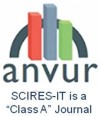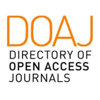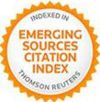Sculptural fragments from the church of San Gennaro extra moenia in Naples: digital twins for heritage knowledge, analysis and fruition 
Abstract
This paper examines the role that new technologies and digital representation strategies can play in the conservation and enhancement of the medieval sculptural heritage, often difficult to understand due to its fragmented and lacunar state. The case study presented is the apparatus of sculptural fragments belonged to the Church of San Gennaro Extra Moenia in Naples and today preserved in the Palatine Chapel of the Castel Nuovo Museum. The creation of a library of digital twins becomes a useful tool for academics, enabling them both to enrich their knowledge of sculptural fragments and to advance hypotheses and reconstructive analyses in a digital environment. The design of a virtual reality experience through the use of QR codes and Google Cardboard also allows the creation of new ways of fruition of medieval heritage, especially for non-expert audiences who do not always appreciate traditional methods of cultural meaning transmission.
Keywords
Full Text:
PDFDOI: http://dx.doi.org/10.2423/i22394303v13n1p41
References
Albisinni, P., & Ippoliti, E. (2016). Musei virtuali. Comunicare e/è rappresentare. DISEGNARECON, 9(17), 1-9.
Argan, G. C. (1936). L'architettura protocristiana, preromanica e romanica. Firenze: Nemi.
Arizpe, L. (2000). Cultural Heritage and Globalization. In E. C. Avrami, R. Mason, & M. De la Torre (Eds.), Values and Heritage Conservation. Research Report The Getty Conservation Institute (pp. 32-37). Los Angeles, CA: Getty Conservation Institute.
Bellermann, C. F. (1839). Über die ältesten christlichen Begräbnisstätten und besonders die Katakomben zu Neapel mit ihren Wandgemälden. Ein Betrag zur christlichen Altertumskunde. Hamburg: Forgotten Books.
Cautela, G. (1989). Il restauro del ciborio trecentesco della basilica di S. Gennaro extra moenia. Campania Sacra, 20, 391-400.
Cautela, G., Di Mauro, L., & Ruotolo, R. (2013). Napoli sacra: guida alle chiese della città. Napoli: Elio De Rosa.
Cavazzini, L., Di Fabio, C., & Vitolo, P. (2021). Introduzione. MEFRM: Mélanges de l'École française de Rome: Moyen Âge, 133(1), 1-4.
Cerquetti, M. (2015). The Importance of Being Earnest. Nuove sfide per le ICT in ambito museale. In F. Forlani, & T. Pencarelli (Eds.), The Experience Logic as a New Perspective for Marketing Management (pp. 1-5). Heldelberg: Springer.
Cotter, G. A. (2004). The digitization of museum specimens: Much is at stake as museums worldwide work to put their collections and data online. Scientist, 18, 8-9.
Damiani, S. (2020). Arte e cultura digitale. Roma: Aracne.
Ebanista, C. (2018). Nuovi dati sulla Basilica di San Gennaro Extra Moenia a Napoli tra Medioevo ed Età contemporanea. In P. De Vingo (Ed.), Le archeologie di Marilli. Miscellanea di studi in ricordo di Maria Maddalena Negro Ponzi Mancini (pp. 305-337). Alessandria: Edizioni dell'Orso.
Egels, Y., & Kasser, M. (2002). Digital Photogrammetry. London: Taylor & Francis Inc.
Gabellone, F. (2022). Digital Twin: a new perspective for cultural heritage management and fruition. Acta Imeko, 11(1), 1-7.
Galante, G. A. (1872). Guida sacra della città di Napoli. Napoli: Stamperia del Fibreno.
Hutson, J., & Olsen, T. (2021). Digital Humanities and Virtual Reality: A Review of Theories and Best Practices for Art History. International Journal of Technology in Education IJTE, 4(3), 491-500.
Manovich, L. (2005). Il linguaggio dei nuovi media. Milano: Edizioni Olivares.
Ott, M., & Pozzi, F. (2008). ICT and Cultural Heritage Education: Which Added Value? In M. Lytras, J. Carroll, E. Damiani, & R. Tennyson (Eds.), Emerging Technologies and Information Systems for the Knowledge Society. WSKS 2008. Lecture Notes in Computer Science (pp. 131-138). Berlin - Heidelberg: Springer.
Page, K. (2019). The Edge of Disruption: Ride the Wave of Digital Transformation. London: Kogan Page Ltd.
Panza, M. O. (2010). Stanze che hanno per tetto il cielo: dagli ipogei alla “camera urbana". In E. Mandelli, & G. Lavoratti (Eds.), Disegnare il tempo e l’armonia: il disegno di architettura osservatorio 1 (pp. 330-337). Firenze: Alinea Editrice.
Pelliccia, A. A. (1785). De christianae ecclesiae primae, mediae et novissimae aetatis politia IV. Vercelli: Ex Patrio Typographeo.
Pereira Uzal, J. (2016). 3D modelling in cultural heritage using structure from motion techniques. Ph investigacion, 6, 49-59.
Scuderi, A., & Salvetti, F. (2019). Digitalization and cultural heritage in Italy: innovative and cutting-edge practices. Milano: Franco Angeli.
Severini, G. (2015). Il ciborio di Santa Maria antiqua: analisi comparativa e rilievo 3D per un'ipotesi di ricostruzione. Temporis Signa. Archeologia della tarda antichità e del medioevo, X, 140-160.
Simondon, G. (2017). Sulla tecnica. Napoli - Salerno: Orthotes.
Toscano, M. A., & Gremigni, E. (2008). Introduzione alla sociologia dei beni culturali. Testi antologici. Firenze: Le Lettere.
Volpicella, S. (1847). Storia dei Monumenti del Reame delle Due Sicilie II/1. Principali edificii della città di Napoli. Napoli: Stamperia e cartiere del Fibreno.
Article Metrics
Metrics powered by PLOS ALM
Refbacks
Copyright (c) 2023 Greta Attademo

This work is licensed under a Creative Commons Attribution-NonCommercial-NoDerivatives 4.0 International License.
SCIRES-IT, e-ISSN 2239-4303
Journal founded by Virginia Valzano





